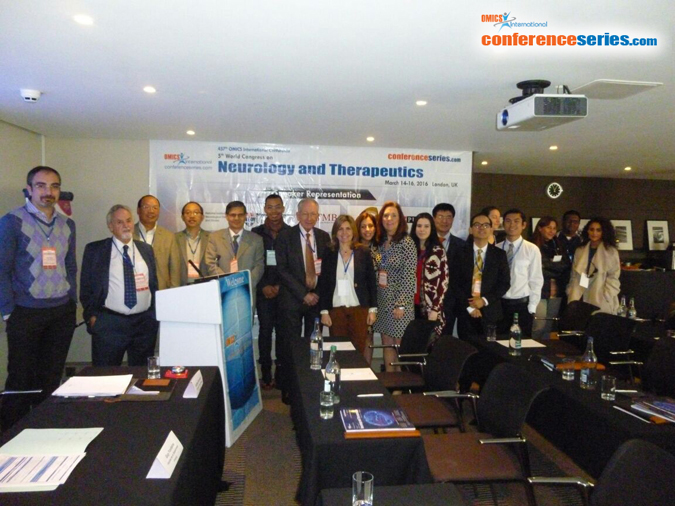Safa Shehab
United Arab Emirates University, UAE
Title: The role of the uninjured adjacent nerve in the development hyperalgesia in an experimental model of peripheral neuropathic pain
Biography
Biography: Safa Shehab
Abstract
Rats develop hyperalgesia and allodynia in the hind paw following L5 spinal nerve ligation and transection as seen in human neuropathic pain. Since the skin of the hind paw of the rat is mainly innervated by L4 and L5 nerves, it is assumed that uninjured L4 nerve would be involved in the development of neuropathic pain. Anatomically, we showed that the unmyelinated primary afferents of L5 spinal nerve did not only terminate in the corresponding L5 spinal segment and rather extended to two spinal segments rostrally and one segment caudally where they intermingle with primary afferents of L4 nerve. Subsequently, we demonstrated up-regulations of NPY, VIP and NK1r and down-regulations of SP, CGRP and IB4 binding following L5 nerve injury not only in the dorsal horn of L5 spinal segment where the injured L5 enters, but also extended from L3-L6 spinal segments. To investigate the potential role of adjacent uninjured L4 nerve in heat hyperalgesia, Phosphorylated Extracellular Regulated Kinase (pERK) was used as a pain marker in response to heat noxious stimuli applied to both hind paws following unilateral L5 nerve injury. The results showed that the number of pERK-immunoreactive neurons was significantly higher in the ipsilateral side of L4 spinal segment, which receives innervation from uninjured L4 nerve, compared with contralateral control side which receives both uninjured L4 and L5 spinal nerves. The data demonstrate the role of uninjured L4 nerve in the development of heat hyperalgesia following L5 nerve injury. Two hypotheses on the production and maintenance of peripheral neuropathic pain will be discussed.


